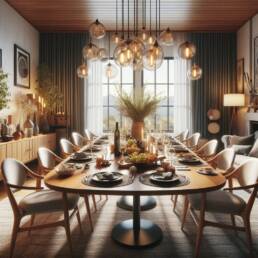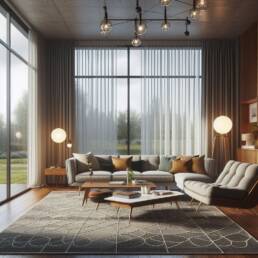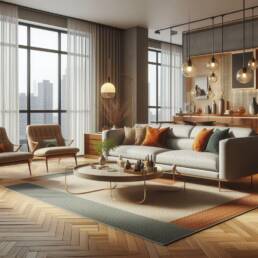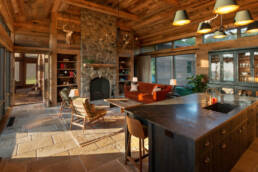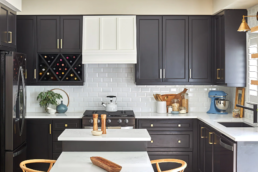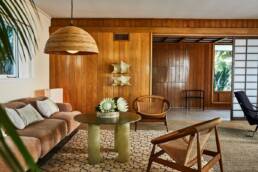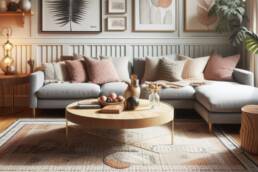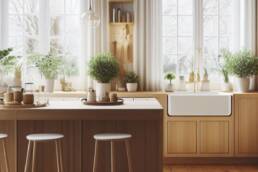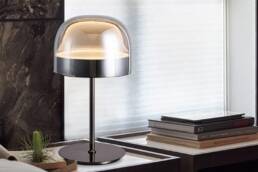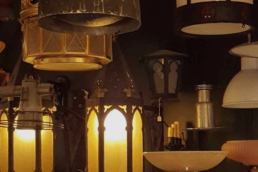Creating a mid-century modern interior for a living room or dining room involves a careful balance of design elements, furniture choices, and aesthetic details.
The mid-century modern style emerged in the mid-20th century, roughly from the 1930s to the 1960s, and is characterized by clean lines, organic shapes, and a focus on functionality. To achieve an authentic mid-century modern look, consider the following interior design concepts, furniture selections, and elements.
- Color Palette
Mid-century modern color palettes typically feature a mix of bold and muted tones. Embrace colors like avocado green, mustard yellow, teal, and orange. These vibrant hues can be paired with neutrals such as white, gray, and beige. Consider using a few accent colors sparingly to add visual interest without overwhelming the space.
- Furniture Selection
The furniture in a mid-century modern interior is often characterized by sleek lines, organic shapes, and functionality. Key furniture pieces to include:
- Eames Lounge Chair: An iconic piece designed by Charles and Ray Eames, the Eames Lounge Chair is a classic mid-century modern item known for its combination of comfort and style.
- Low-profile Sofas: Opt for sofas with clean lines, thin legs, and simple shapes. Neutral or bold-colored upholstery works well, depending on your overall color scheme.
- Teak Furniture: Mid-century modern interiors often feature furniture made from teak wood. Look for coffee tables, sideboards, and dining tables with this warm, durable wood.
- Hairpin Leg Furniture: Tables and chairs with hairpin legs are a staple of mid-century modern design. They provide a sense of openness and lightness to the space.
- Built-in Furniture: Consider built-in shelving or cabinets with clean lines and minimalistic design for a cohesive and functional look.
- Lighting
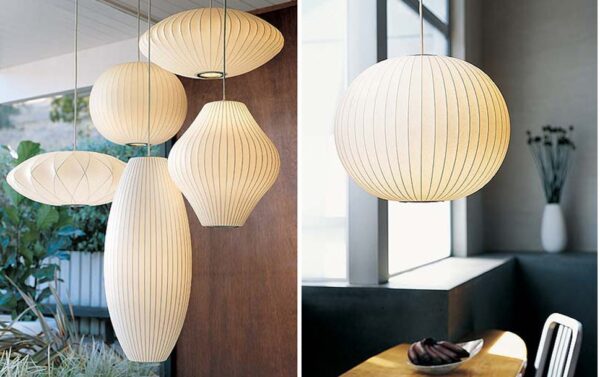 Lighting plays a crucial role in mid-century modern interiors. Look for fixtures with geometric shapes, clean lines, and materials like metal and glass. Iconic mid-century modern lighting options include:
Lighting plays a crucial role in mid-century modern interiors. Look for fixtures with geometric shapes, clean lines, and materials like metal and glass. Iconic mid-century modern lighting options include:
- Sputnik Chandelier: This distinctive chandelier features radiating arms reminiscent of a satellite, providing a focal point for the room.
- Nelson Bubble Lamps: Designed by George Nelson, these pendant lights made of a delicate web of interconnected spheres create a soft, diffused glow.
- Tripod Floor Lamps: Tripod lamps with thin legs and simple shades are a popular choice for mid-century modern spaces.
- Patterns and Textures
Incorporate patterns and textures to add visual interest and depth to the design. Consider the following:
- Geometric Patterns: Use rugs, throw pillows, or wall art with geometric patterns like chevrons, triangles, or circles.
- Natural Textures: Bring in natural textures like wood, leather, and wool to add warmth to the space.
- Abstract Art: Choose abstract artwork with bold colors and simple forms to complement the mid-century modern aesthetic.
- Open Floor Plan
Mid-century modern architecture often emphasizes open and flowing spaces. If possible, consider an open floor plan to create a seamless connection between the living room and dining room. Use area rugs and furniture arrangement to define different zones within the open space.
- Minimalism and Functionality
Mid-century modern design celebrates minimalism and functionality. Avoid clutter and unnecessary ornamentation. Choose furniture that serves a purpose and allows for efficient use of space.
- Accent Pieces
Accessorize with carefully chosen accent pieces to complete the mid-century modern look:
- Sunburst Mirrors: These mirrors with radiating spokes are a popular mid-century modern accessory.
- Ceramic and Glass Decor: Display ceramics, glassware, and vases with clean lines and organic shapes.
- Atomic Age Clocks: Incorporate clocks with atomic or starburst designs as statement pieces.
- Window Treatments
Opt for simple window treatments that allow natural light to fill the space. Mid-century modern interiors often feature large windows, and unobtrusive curtains or blinds can maintain the clean and open aesthetic.
- Plant Life
Bring nature indoors with potted plants. Mid-century modern design often incorporates elements from the outdoors, and adding greenery can soften the space and enhance its overall appeal.
- Personal Touch
While staying true to mid-century modern principles, don’t forget to infuse your personality into the design. Whether it’s through personal artwork, family photos, or unique decor items, adding a personal touch can make the space feel inviting and truly yours.
Creating a mid-century modern interior for a living room or dining room involves a thoughtful blend of iconic furniture pieces, a distinctive color palette, and an appreciation for clean lines and functionality. By incorporating these design concepts and elements, you can achieve a timeless and stylish mid-century modern space that reflects the essence of this influential design era. For more on lighting fixtures, mirrors, lamps and accessories visit one of our Showrooms in Vernon or Penticton and talk to our design and Lighting Expert.


